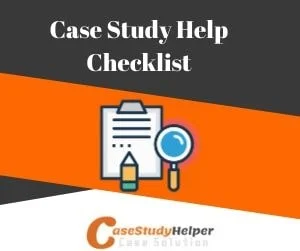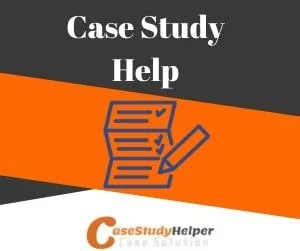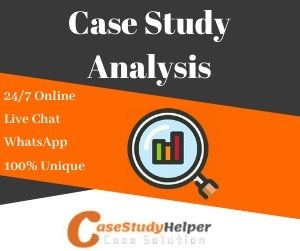

Practical Regression Regression Basics Case Study Solution
Practical Regression Regression Basics Case Study Help
Practical Regression Regression Basics Case Study Analysis
The following area concentrates on the of marketing for Practical Regression Regression Basics where the company's customers, competitors and core competencies have actually examined in order to justify whether the decision to introduce Case Study Help under Practical Regression Regression Basics brand name would be a possible alternative or not. We have actually to start with taken a look at the type of consumers that Practical Regression Regression Basics deals in while an assessment of the competitive environment and the company's weaknesses and strengths follows. Embedded in the 3C analysis is the reason for not introducing Case Study Help under Practical Regression Regression Basics name.

Both the groups utilize Practical Regression Regression Basics high performance adhesives while the company is not just involved in the production of these adhesives however likewise markets them to these customer groups. We would be focusing on the customers of instantaneous adhesives for this analysis given that the market for the latter has a lower capacity for Practical Regression Regression Basics compared to that of instant adhesives.
The total market for instant adhesives is roughly 890,000 in the US in 1978 which covers both consumer groups which have been identified earlier.If we take a look at a breakdown of Practical Regression Regression Basics possible market or client groups, we can see that the business offers to OEMs (Initial Devices Producers), Do-it-Yourself consumers, repair work and overhauling business (MRO) and manufacturers dealing in items made of leather, metal, plastic and wood. This diversity in clients recommends that Practical Regression Regression Basics can target has numerous options in terms of segmenting the market for its brand-new item specifically as each of these groups would be needing the same type of product with particular changes in quantity, product packaging or demand. However, the client is not cost delicate or brand name mindful so launching a low priced dispenser under Practical Regression Regression Basics name is not a suggested choice.
Practical Regression Regression Basics is not just a maker of adhesives however enjoys market management in the instant adhesive industry. The business has its own knowledgeable and qualified sales force which adds worth to sales by training the business's network of 250 distributors for helping with the sale of adhesives. Practical Regression Regression Basics believes in exclusive distribution as suggested by the reality that it has chosen to sell through 250 suppliers whereas there is t a network of 10000 suppliers that can be checked out for expanding reach by means of distributors. The company's reach is not limited to North America just as it also enjoys global sales. With 1400 outlets spread out all throughout North America, Practical Regression Regression Basics has its internal production plants rather than using out-sourcing as the favored strategy.
Core proficiencies are not limited to adhesive manufacturing just as Practical Regression Regression Basics also concentrates on making adhesive giving equipment to facilitate using its products. This double production technique gives Practical Regression Regression Basics an edge over rivals because none of the rivals of giving devices makes instant adhesives. Additionally, none of these rivals sells straight to the customer either and uses distributors for reaching out to customers. While we are looking at the strengths of Practical Regression Regression Basics, it is essential to highlight the business's weak points.
The company's sales personnel is proficient in training suppliers, the reality remains that the sales team is not trained in selling equipment so there is a possibility of relying greatly on suppliers when promoting adhesive equipment. It ought to likewise be noted that the distributors are revealing hesitation when it comes to offering equipment that needs maintenance which increases the obstacles of offering devices under a particular brand name.
The company has products aimed at the high end of the market if we look at Practical Regression Regression Basics item line in adhesive equipment especially. If Practical Regression Regression Basics sells Case Study Help under the very same portfolio, the possibility of sales cannibalization exists. Provided the fact that Case Study Help is priced lower than Practical Regression Regression Basics high-end line of product, sales cannibalization would absolutely be impacting Practical Regression Regression Basics sales income if the adhesive equipment is offered under the company's brand name.
We can see sales cannibalization affecting Practical Regression Regression Basics 27A Pencil Applicator which is priced at $275. There is another possible risk which could lower Practical Regression Regression Basics income if Case Study Help is introduced under the company's trademark name. The truth that $175000 has actually been invested in promoting SuperBonder recommends that it is not a good time for introducing a dispenser which can highlight the reality that SuperBonder can get logged and Case Study Help is the anti-clogging solution for the immediate adhesive.
Additionally, if we look at the marketplace in general, the adhesives market does disappoint brand orientation or cost consciousness which provides us two additional factors for not releasing a low priced product under the business's brand name.
The competitive environment of Practical Regression Regression Basics would be studied through Porter's 5 forces analysis which would highlight the degree of competition in the market.
Bargaining Power of Buyer: The Bargaining power of the buyer in this market is low especially as the buyer has low knowledge about the item. While companies like Practical Regression Regression Basics have handled to train distributors regarding adhesives, the last consumer depends on distributors. Approximately 72% of sales are made straight by makers and suppliers for immediate adhesives so the purchaser has a low bargaining power.
Bargaining Power of Supplier: Offered the fact that the adhesive market is dominated by 3 players, it could be stated that the provider enjoys a greater bargaining power compared to the purchaser. The reality stays that the provider does not have much impact over the purchaser at this point especially as the buyer does not reveal brand name acknowledgment or rate sensitivity. This suggests that the distributor has the greater power when it pertains to the adhesive market while the maker and the buyer do not have a major control over the real sales.
Threat of new entrants: The competitive environment with its low brand commitment and the ease of entry shown by foreign Japanese rivals in the instant adhesive market shows that the marketplace allows ease of entry. If we look at Practical Regression Regression Basics in specific, the business has double capabilities in terms of being a producer of adhesive dispensers and immediate adhesives. Possible threats in equipment dispensing market are low which reveals the possibility of creating brand name awareness in not just instantaneous adhesives however likewise in dispensing adhesives as none of the industry players has handled to place itself in double capabilities.
Danger of Substitutes: The threat of replacements in the immediate adhesive industry is low while the dispenser market in particular has replacements like Glumetic idea applicators, inbuilt applicators, pencil applicators and sophisticated consoles. The reality remains that if Practical Regression Regression Basics presented Case Study Help, it would be delighting in sales cannibalization for its own items. (see appendix 1 for framework).

Despite the fact that our 3C analysis has offered various reasons for not introducing Case Study Help under Practical Regression Regression Basics name, we have actually a recommended marketing mix for Case Study Help given below if Practical Regression Regression Basics chooses to go ahead with the launch.
Product & Target Market: The target audience picked for Case Study Help is 'Automobile services' for a variety of factors. There are currently 89257 facilities in this segment and a high usage of around 58900 pounds. is being utilized by 36.1 % of the marketplace. This market has an extra growth capacity of 10.1% which may be a good enough niche market section for Case Study Help. Not just would a portable dispenser offer convenience to this specific market, the fact that the Do-it-Yourself market can also be targeted if a drinkable low priced adhesive is being sold for usage with SuperBonder. The product would be sold without the 'glumetic suggestion' and 'vari-drop' so that the customer can choose whether he wants to go with either of the two accessories or not.
Price: The recommended cost of Case Study Help has actually been kept at $175 to the end user whether it is offered through distributors or by means of direct selling. This price would not include the expense of the 'vari tip' or the 'glumetic pointer'. A cost below $250 would not need approvals from the senior management in case a mechanic at an automobile upkeep shop needs to acquire the item on his own. This would increase the possibility of influencing mechanics to acquire the product for usage in their day-to-day maintenance jobs.
Practical Regression Regression Basics would just be getting $157 per unit as displayed in appendix 2 which gives a breakdown of gross profitability and net success for Practical Regression Regression Basics for releasing Case Study Help.
Place: A circulation model where Practical Regression Regression Basics straight sends the product to the regional distributor and keeps a 10% drop delivery allowance for the supplier would be used by Practical Regression Regression Basics. Since the sales team is currently taken part in offering instantaneous adhesives and they do not have competence in selling dispensers, including them in the selling process would be costly specifically as each sales call expenses around $120. The distributors are already selling dispensers so selling Case Study Help through them would be a favorable option.
Promotion: Although a low marketing budget plan needs to have been designated to Case Study Help but the reality that the dispenser is an innovation and it requires to be marketed well in order to cover the capital costs sustained for production, the recommended advertising strategy costing $51816 is recommended for initially introducing the product in the market. The planned advertisements in publications would be targeted at mechanics in vehicle upkeep stores. (Recommended text for the ad is displayed in appendix 3 while the 4Ps are summarized in appendix 4).
